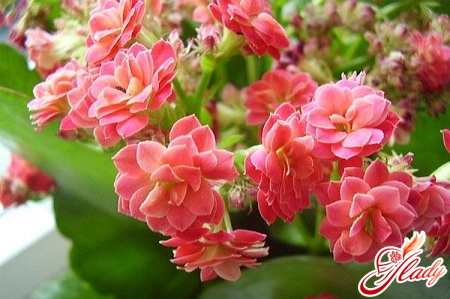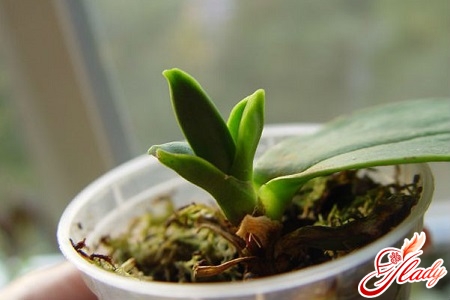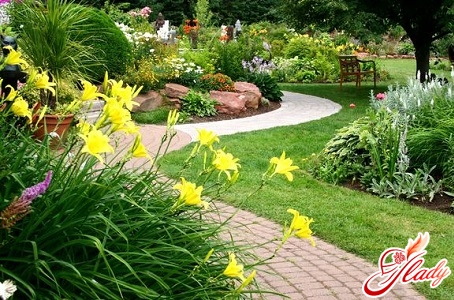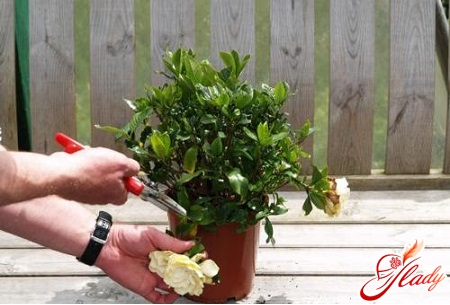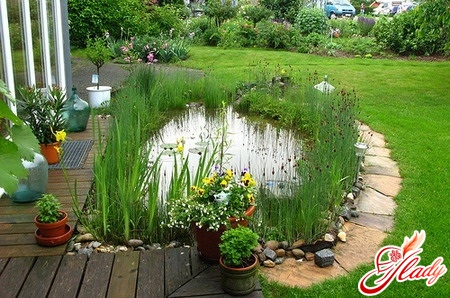 The key to successful orchid growing istimely water treatments. If you want your flower to grow healthy and beautiful, you need to know exactly what proper orchid watering is. It is known that the most common cause of plant death is excess moisture, which is much more dangerous than untimely watering. And many novice gardeners are sure that you should water an orchid at home no more than once a week. This opinion is wrong and can lead to negative consequences. Let's figure out all the nuances together.
The key to successful orchid growing istimely water treatments. If you want your flower to grow healthy and beautiful, you need to know exactly what proper orchid watering is. It is known that the most common cause of plant death is excess moisture, which is much more dangerous than untimely watering. And many novice gardeners are sure that you should water an orchid at home no more than once a week. This opinion is wrong and can lead to negative consequences. Let's figure out all the nuances together.
Water and photosynthesis - is there a connection?
If you enjoyed biology classes in school,then you probably remember that all chemical processes occurring in plants are called photosynthesis. And they need sunlight. We will not go into the details of the school curriculum again, but will simply say that orchids need light energy in combination with carbon dioxide and water to absorb glucose and oxygen. The roots of the plant absorb water with mineral salts dissolved in it and lift it up. There (under the influence of certain chemical reactions) the water turns into glucose, chlorophyll and proteins necessary for the growth of the plant. There are a number of main factors under which the orchid agrees to "drink" water. Let's look at them. In order for the water to be able to move into the deeper layers of the plant, a signal for absorption must come from the orchid leaves. And for this, the sun must shine. For some orchids more, for others - less. Each plant has its own light boundary, which controls its growth and development. In tropical forests, orchids always have enough light and moisture. But at home, the situation is different. When there is too little light, the plant "falls asleep". This condition is dangerous for the orchid and often causes the root system to rot. More precisely, the cause of rot is improper watering at this time. As long as the sun shines on the orchid in sufficient quantity, a signal is constantly sent to absorb moisture. At this time, the plant requires abundant watering. But as soon as the light intensity falls below the light limit, the signal stops coming. And from this moment on, watering should be reduced or stopped completely (depending on the type of orchid), otherwise the water will begin to destroy the roots, and then the plant.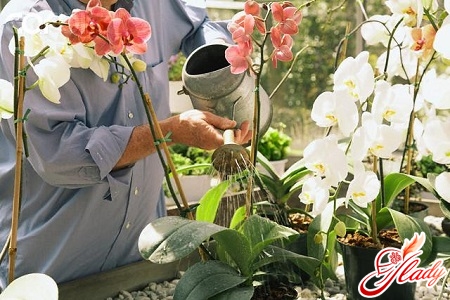
Factors affecting the consumption of moisture
It is not for nothing that orchids are planted in transparent pots.This is necessary to monitor the condition of the roots. If you want to understand whether you need to water your orchid or not, just look at its roots. If their tips have a reddish or green tint - the orchid is in the active growth phase. It has enough sunlight and can be watered abundantly without fear of rotting. The roots will cope with moisture perfectly and will process it for the benefit of the whole plant. If the tips of the roots are slightly closed, but there is still a growing point - the plant does not have enough light. You can move the flower to a more illuminated area and continue to water abundantly. Completely closed tips indicate very poor lighting. In this case, excess moisture can seriously harm the plant. Another factor affects the rate of moisture consumption - transpiration (evaporation of water from the surface of the leaves). The stronger the transpiration, the more persistent the signal is given to the root. This process directly depends on sunlight and air humidity. In order for the transpiration process to be as efficient as possible, the following ratio of humidity and ambient temperature is required: 50-60% humidity at 28-33 degrees Celsius. With this ratio, water will be directed to the development of new cells, the growth of green mass, roots and peduncles. City apartments are far from the conditions necessary for the full growth of orchids. Therefore, it is necessary to place the plant in a room that will meet its needs. Do not place the orchid pot under direct sunlight - choose a place with diffused and bright lighting. In winter, it is advisable to remove the flower from heating devices, since they dry the air too much. Also, in the cold season, the plant requires additional illumination, which can be organized with fluorescent lamps. If your orchid belongs to the "dormant" species, let it rest. Stop feeding, water only to slightly moisten the soil.
How and what to water the orchids?
How often is watering necessary at home?It is difficult to say. Here you need to be guided by the condition of the soil. Stick a small wooden stick into the orchid pot. Before watering the plant, see if there are traces of moisture left on the stick. If yes, it is not time for watering yet. If the stick is completely dry, feel free to arrange water procedures for the flower. You can also be guided by the weight of the pot with the plant. If you are absolutely sure that it is time to water the plant, take the pot with the orchid in your hands and try to remember its weight. And each time before watering, weigh the plant in your hand. What water to water the orchid with? In nature, the plant drinks only rainwater, which is distinguished by its softness. If you live in a private sector and you have the opportunity to collect rainwater - use it. The orchid will only thank you for such care. In winter (if the plant is not dormant and grows and develops all year round), you can water it with melt water, pre-heated to room temperature. To determine the necessary parameters, use a special device. Remember, different types of orchids react differently to water hardness and acidity. Approximate indicators are as follows: hardness - from 2 to 7 °dH., acidity - from 5.5 to 6.5 pH.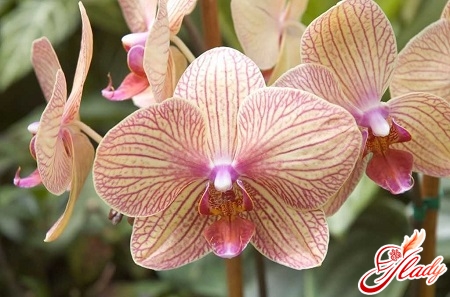
Some practical advice
Now you know what kind of water to use for wateringorchid and how to determine the period of water procedures. It's time to figure out how best to carry out these procedures at home. Let's consider several methods.
- With the use of a warm shower
Place the orchid in the bathroom and set the shower tothe finest spray. After watering, drain off excess water, do not forget to shake off droplets from the sinuses and core of the plant. You can heat the flower with water, if necessary. To do this, use hotter water, making several approaches for 10-20 seconds with breaks of 10-15 minutes.
- The immersion method
Take a basin of warm water (temperatureshould be within 20-35 degrees). Place the pot with the plant there for about half an hour. After the procedure, the orchid should be left for 20-30 minutes to allow it to get rid of excess moisture. Do not water all orchids with the same water - change it each time. Especially if you are not sure about the health of the root system of a particular flower. Fungal infections easily multiply in humid conditions and can affect all flowers.
- Using a watering can
This method is suitable if there is no time for twoprevious ones. But it has several disadvantages. Firstly, it is difficult to evenly moisten the substrate this way. Secondly, it is necessary to ensure that there is no excess water left in the tray. And thirdly, metal watering cans cannot be used for watering, as over time they form harmful compounds that are detrimental to the roots.
- Spraying method
This method is suitable for orchids thatgrown in bark (without substrate). In this case, the roots dry out faster than in the soil. It is recommended to carry out the spraying procedure in the first half of the day. Well, now you know how to properly water an orchid at home. We hope that our article will help you grow a healthy and beautiful plant that will become a real decoration of your home!




